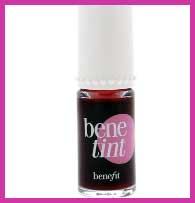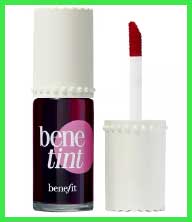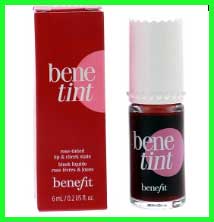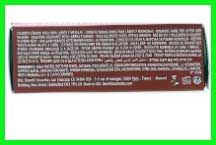Picture this: a single product that gives your lips and cheeks a natural, just-pinched flush that lasts all day, doesn’t smudge, and feels like you’re wearing nothing at all. That’s Benefit’s Benetint Lip & Cheek Stain, and I’m hooked. As someone who’s always on the hunt for low-maintenance beauty that delivers, I can’t recommend this enough. Whether you’re a makeup newbie or a seasoned pro, this cult-classic tint is a game-changer. Let me take you through my experience, the pros and cons, how to make it work for you, and how it stacks up against other brands. Trust me, you’ll want to add this to your cart by the end.
My Personal Experience With Benetint

I first stumbled across Benetint during a late-night TikTok scroll, where influencers were raving about its rosy glow. Intrigued, I grabbed a bottle from Sephora, and let me tell you—it’s been a staple in my routine ever since. The first time I swiped it on, I was skeptical. The watery, rose-red liquid looked intense in the bottle, but once blended, it gave my cheeks and lips a natural flush that screamed “I woke up like this.” It’s like the beauty equivalent of a good filter—subtle but transformative.
Applying it was a learning curve. The doe-foot applicator is precise, but the formula dries fast, so you’ve got to blend like your life depends on it. I dabbed three dots on each cheek and used my fingers to pat it in, creating a soft, dewy glow. On my lips, I layered it for a bolder pop, and it stayed put through coffee, lunch, and even a sweaty gym session. The rose scent is a nice touch, though it’s not for everyone. Over time, I’ve learned to make it work for my dry skin, and I’ll share those tips later.
What I love most is its versatility. I’ve used it on my eyelids for a monochromatic look, and it’s a lifesaver for days when I’m running late but still want to look polished. It’s not perfect—there are some quirks—but it’s become my go-to for effortless beauty.
Pros Of Benetint Lip & Cheek Stain
Also Read: My Thought on Jane Iredale Just Kissed Lip And Cheek Stain Review
Here’s why Benetint has earned its cult status in my makeup bag:
- Long-lasting staying power: This stuff doesn’t budge. I’ve worn it for 12+ hours through meals, drinks, and workouts, and the color stays vibrant.
- Natural, buildable finish: You can go for a subtle flush or layer it for a bold pop. It mimics that just-pinched look perfectly.
- Lightweight formula: It feels like nothing on your skin, unlike heavy cream blushes or lipsticks that can feel cakey.
- Versatile application: Use it on lips, cheeks, or even eyelids for a cohesive, monochromatic vibe. It’s a multi-tasker’s dream.
- Kiss-proof and smudge-proof: I’ve kissed my partner and sipped coffee without leaving a trace. It’s truly transfer-resistant.
- Universally flattering shade: The rosy hue complements all skin tones, from pale to deep, making it a safe bet for everyone.
- Compact and travel-friendly: The 10ml bottle fits in any purse, perfect for touch-ups or on-the-go glam.
- Easy to blend (with practice): Once you get the hang of it, blending is a breeze, especially with fingertips or a damp sponge.
- No touch-ups needed: Unlike lipsticks that fade, Benetint sinks into your skin, so you’re good all day.
- Iconic brand legacy: Created in the 1970s for an exotic dancer, it’s a product with history and a loyal fanbase.
Each of these perks makes Benetint a standout. The staying power is unreal—I’ve never had a blush last through a full day of errands. The lightweight feel is a godsend for my dry skin, and the fact that I can use it on multiple areas saves me time and space in my makeup bag. It’s not just a product; it’s a vibe.
Cons Of Benetint Lip & Cheek Stain
No product is flawless, and Benetint has its quirks. Here’s what I’ve noticed:

- Dries quickly: You’ve got seconds to blend before it sets, which can lead to patchy cheeks if you’re not fast.
- Learning curve for application: The watery texture takes practice to master, especially for makeup newbies.
- Can stain fingers: If you’re blending with your fingers, expect some temporary staining unless you wash immediately.
- Not ideal for very dry lips: Without a lip balm or gloss topper, it can feel drying on chapped lips
- Limited shade range: While the rose tint is universal, I wish there were more options for variety.
- Pricey for the size: At $24 for 0.2 oz, it’s not cheap, especially if you use it daily.
- Strong rose scent: The floral fragrance is lovely for some, but it can be overpowering if you’re sensitive to smells.
- Not as pigmented on lips: For some, like me, it takes multiple layers to get bold lip color, which can be tedious.
- Removal requires effort: You’ll need an oil-based cleanser to fully remove it, as it clings to skin like nobody’s business.
- Not creamy like other tints: If you prefer a dewier, creamier finish, this might feel too watery.
These cons don’t make Benetint a dealbreaker, but they’re worth noting. The quick-drying formula tripped me up at first—I ended up with red streaks on my cheeks until I learned to blend faster. The price stings a bit, but a little goes a long way, so the bottle lasts months.
Maintenance And Tips To Get The Most Out Of Benetint
Also Read: My Thought on Jane Iredale Just Kissed Lip And Cheek Stain Review
To make Benetint your BFF, you need a few tricks up your sleeve. Here’s how I maximize its potential:
- Prep your skin: Exfoliate and moisturize your lips and cheeks before applying. This prevents the tint from clinging to dry patches.
- Use a light hand: Start with 2-3 dots on each cheek and blend immediately with clean fingers or a damp beauty sponge for a seamless finish.
- Layer strategically: For bolder color, apply one layer, let it dry, then add another. This builds intensity without patchiness.
- Top with gloss for lips: If your lips feel dry, apply a clear gloss or balm over the tint for hydration and shine.
- Blend with tools: A stippling brush or beauty blender works better than fingers to avoid staining and ensure even application.
- Apply over cream products: Use Benetint over liquid foundation or cream blush for better blendability and a natural glow.
- Remove with oil-based cleanser: To avoid leftover stains, massage an oil cleanser into your skin and wipe with a warm cloth.
- Experiment with placement: Dot it on the bridge of your nose or eyelids for a sun-kissed, monochromatic look that’s super trendy.
- Store properly: Keep the bottle tightly closed and away from sunlight to maintain the formula’s consistency.
- Practice makes perfect: Spend a few sessions playing with application to master the quick-drying formula. It’s worth the effort.
These tips transformed my Benetint experience. Prepping my skin made a huge difference in avoiding patchiness, and layering gloss over the lip tint kept my lips hydrated. I also love experimenting with nose placement for that “just came back from the beach” vibe. Trust me, once you nail the technique, you’ll be obsessed.
Benetint vs. Other Brands: How It Stacks Up

Let’s see how Benetint holds its own against other popular lip and cheek tints. I’ve tested a few, and here’s the breakdown:
Benetint vs. Etude House Dear Darling Water Tint
- Shade Range: Benetint’s single rose shade is iconic, but Etude House offers more variety, like cherry and orange hues.
- Price: Etude House is a steal at under $10, while Benetint’s $24 price tag feels steep for the size.
- Texture: Both are watery, but Etude House feels slightly thicker, making it easier to control during application.
- Longevity: Benetint lasts longer on my cheeks, but Etude House fades faster, especially on lips.
- Finish: Benetint’s sheer finish is more natural, while Etude House can look slightly glossier.
- Application: Etude House’s sponge-tip applicator is similar, but I find Benetint’s doe-foot more precise.
- Hydration: Neither is super moisturizing, but Etude House feels less drying on lips.
- Availability: Etude House is harder to find in stores, while Benetint is widely available at Sephora and Ulta.
- Scent: Benetint’s rose scent is strong; Etude House has a milder, fruitier vibe.
- Verdict: If you’re on a budget, Etude House is a solid dupe, but Benetint wins for staying power and brand reliability.
Benetint vs. Tower 28 BeachPlease Lip + Cheek Cream Blush
- Formula: Tower 28’s creamy balm is dewier and more hydrating than Benetint’s watery texture.
- Shade Range: Tower 28 offers nine shades, giving you more options compared to Benetint’s one.
- Longevity: Benetint lasts longer as a stain, while Tower 28 needs reapplication after a few hours.
- Application: Tower 28’s stick format is easier to apply than Benetint’s liquid, which requires quick blending.
- Price: Tower 28 is $20, slightly cheaper than Benetint’s $24, but you get more product.
- Finish: Tower 28 gives a juicy, glossy sheen, while Benetint is more matte and natural.
- Skin Benefits: Tower 28’s aloe vera and green tea extracts are skin-loving, while Benetint focuses on color.
- Ease of Use: Tower 28 is beginner-friendly; Benetint takes practice to avoid patchiness.
- Scent: Tower 28 is unscented, a plus for sensitive noses, unlike Benetint’s floral scent.
- Verdict: Tower 28 is great for a dewy, easy-to-use option, but Benetint excels for long-lasting, natural flush.
Benetint vs. Milk Makeup Cooling Water Jelly Tint
- Texture: Milk Makeup’s jelly-like formula is unique and cooling, while Benetint is more liquidy.
- Longevity: Both are long-lasting, but Milk Makeup can be patchier on cheeks if not blended fast.
- Shade Range: Milk Makeup has four shades, offering more variety than Benetint’s single hue.
- Application: Milk Makeup’s stick is mess-free, but Benetint’s applicator allows for precise placement.
- Price: Milk Makeup is $22, close to Benetint’s $24, but feels more luxurious in packaging.
- Finish: Milk Makeup gives a bolder, more vibrant stain; Benetint is subtler and more natural.
- Hydration: Milk Makeup’s cooling effect is hydrating, while Benetint can dry out lips without gloss.
- Popularity: Milk Makeup’s viral status rivals Benetint’s cult following, thanks to TikTok.
- Scent: Milk Makeup is scent-free, while Benetint’s rose fragrance might not suit everyone.
- Verdict: Milk Makeup is fun and trendy, but Benetint’s classic formula and staying power make it more reliable.
Benetint vs. Lakmé Lip and Cheek Tint

- Formula: Lakmé’s cream-based tint is thicker and more hydrating than Benetint’s watery formula.
- Price: Lakmé is budget-friendly at around $8, making it far more affordable than Benetint.
- Longevity: Benetint outlasts Lakmé, which fades after 4-5 hours, especially on oily skin.
- Shade Range: Lakmé offers a few shades, but Benetint’s rose tint is more universally flattering.
- Application: Lakmé’s cream is easier to blend for beginners; Benetint requires quick work.
- Finish: Lakmé gives a dewy, creamy finish, while Benetint is sheer and matte.
- Availability: Lakmé is widely available in India but less so globally, unlike Benetint.
- Scent: Lakmé has a subtle fragrance, less intense than Benetint’s rose scent.
- Skin Benefits: Lakmé’s formula is more moisturizing, ideal for dry skin, unlike Benetint.
- Verdict: Lakmé is a great affordable option for creamy texture lovers, but Benetint wins for longevity.
Each brand has its strengths, but Benetint’s staying power and natural finish keep it at the top of my list. If you’re after affordability, Etude House or Lakmé are great, but for a premium, long-lasting option, Benetint is hard to beat.
Frequently Asked Questions (Faq)
Lip and cheek tints like Benetint are generally safe for most skin types, but they’re not skincare products. Benetint’s water-based formula is lightweight and non-comedogenic, so it won’t clog pores. However, it lacks hydrating ingredients like aloe or oils, so if you have dry skin, prep with a moisturizer to avoid flakiness. Always check the ingredient list for potential allergens like fragrance (Benetint’s rose scent might irritate sensitive skin). Remove it thoroughly with an oil-based cleanser to prevent residue buildup.
Benetint’s cult status comes from its versatility, long-lasting formula, and natural flush. Created in the 1970s for an exotic dancer, it’s been a favorite of makeup artists, celebrities, and TikTokers for its kiss-proof, smudge-proof finish. Its sheer, buildable color suits all skin tones, and the lightweight texture feels effortless. Its iconic rose hue and storied history make it a must-have for anyone chasing that “just-bitten” look.
Benetint is a multi-use tint for lips, cheeks, and even eyelids. You apply it with the doe-foot applicator, dotting it on cheeks for a rosy blush or swiping it on lips for a natural stain. It’s buildable for subtle or bold looks and designed to be smudge-proof and long-lasting. I’ve even used it on my nose bridge for a sun-kissed effect. It’s perfect for minimal makeup days or monochromatic looks.
Lakmé’s lip and cheek tint is a budget-friendly gem, costing around $8. Its creamy formula is hydrating, making it ideal for dry skin, and blends easily for beginners. It offers a dewy finish, unlike Benetint’s matte look, and comes in a few shades for versatility. However, it’s less long-lasting, fading after 4-5 hours, and isn’t as widely available globally. It’s a great choice if you want an affordable, moisturizing tint with a creamy texture.
Conclusion: Why You Need Benetint In Your Life
Also Read: My Thought on Jane Iredale Just Kissed Lip And Cheek Stain Review
If you’re looking for a product that delivers a natural, long-lasting flush with minimal effort, Benetint is your answer. It’s not just a tint—it’s a confidence booster that simplifies your routine while making you look effortlessly radiant. From its kiss-proof formula to its iconic rosy hue, it’s a must-have for anyone who loves versatile, low-maintenance beauty. Grab a bottle, play with the application, and watch it become your new obsession. You won’t regret it.
